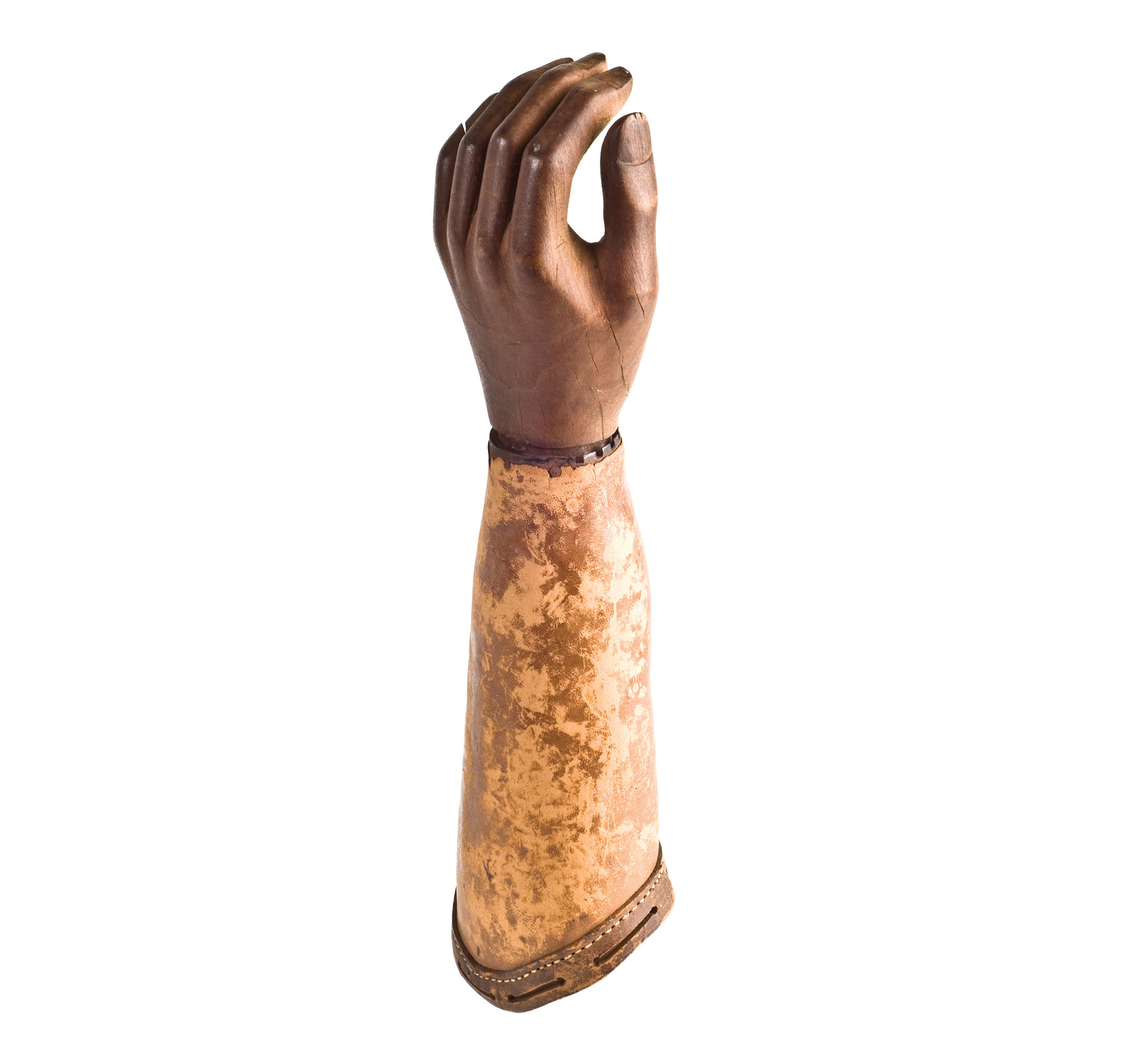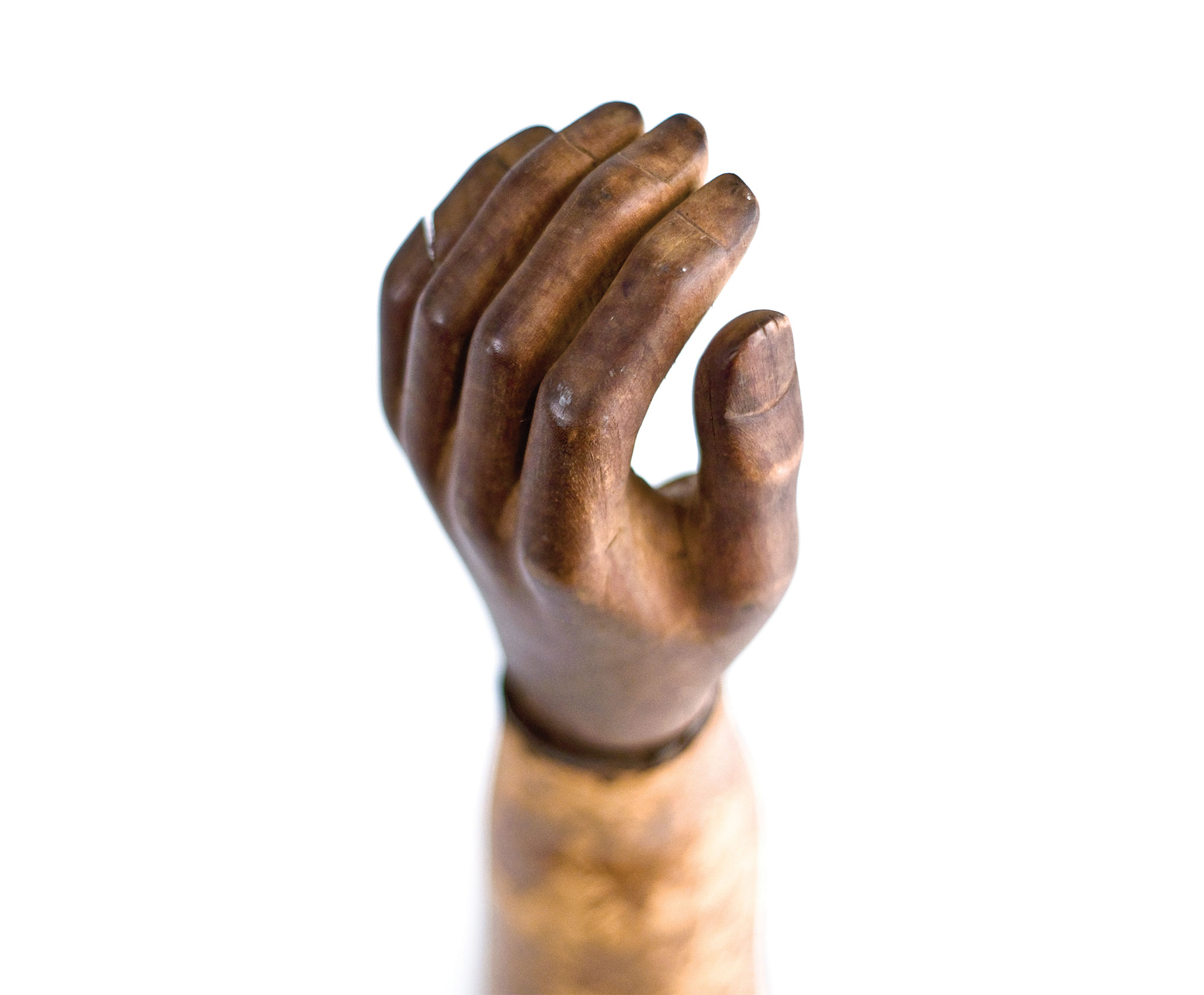The Gaillard Arm
Prosthetic arm and hand made for Colonel Peter Charles Gaillard (1812-1889) following a serious injury received at Battery Wagner on Morris Island in 1863.
The Charleston Museum’s collection includes many objects associated with the Civil War, including uniforms, weapons, flags, and a variety of other objects in some way linked to the Nation’s most deadly conflict. Of these objects, both unusual and strikingly personal, is a prosthetic forearm and hand on exhibit in the Museum’s permanent Civil War gallery.
Popularly known as the Gaillard arm, the prosthetic belonged to Colonel Peter Charles Gaillard (1812-1889). The son of James and Harriet Porcher Gaillard, Peter was born into Charleston’s wealthy upper class. A graduate of both South Carolina College (1832), and West Point (1835), he married Anne Snowden in 1838. He resigned his position as a second lieutenant in the United States Army the same year and went into business as a cotton factor with the firm of Gaillard and Snowden in Charleston.
An ardent supporter of the Confederacy, Gilliard raised the 1st Charleston Battalion, or “Gaillard’s Battalion,” early in 1862. Gaillard and his men fought at both the Battle of Seccessionville on James Island and later at Battery Wagner on Morris Island. While he was injured during both engagements, the wounds incurred on Morris Island were the most impactful and resulted in the amputation of his lower left arm and hand. Gaillard family tradition states that the walnut hand was whittled from a discarded rifle stock (which were frequently walnut) by one of his men and incorporated into the larger prosthesis.
Family tradition states that the hand was whittled by one of Gaillard’s men using a discarded walnut rifle stock.
Gaillard attempted to continue serving throughout 1864, and was even captured and escaped in July of that year, but despite the prosthesis, the injuries Gaillard sustained eventually proved to be an insurmountable handicap to further active military service. In March of 1865 he was found unfit for active service and was officially retired. On November 3, 1865 he was elected mayor of Charleston, the first of the post-war period. He died in 1889 and is buried in Charleston’s Magnolia Cemetery.
Peter Gilliard’s prosthetic arm and hand are on permanent exhibit in the Charleston Museum’s Civil War gallery alongside other objects illustrative of South Carolina’s deep involvement in the conflict.
Chad Stewart
Curator of History



